The distance between chevron is affected by the width of UITableViewCell. If it's less than 320 it'll be even bigger.
I deliberately make the background of my contentView to be green for clarity.
Setting the background of UITableViewCell will make the cell unseenable.
Only the first chevron turn into a move cell sign when table is in edit mode.

Note: All of my UITableViewCell class is created with a special technique. Basically I load an xib with a UITableViewCell, and then the cell I want to create absorb the property of that UITableViewCell
Here is the full code:
-(id)initWithCoder:(NSCoder *)aDecoder
{
self = [super initWithCoder:aDecoder];
if (self) {
//[self vLoadMainBundle];
//self=(BGBaseTableViewCell *)self.view;
[self BaseInitialize];
}
return self;
}
- (id)initWithFrame:(CGRect)frame
{
self = [super initWithFrame:frame];
if (self) {
[self BaseInitialize];
//[self vLoadMainBundle];
//self=(BGBaseTableViewCell *)self.view;
}
return self;
}
-(void) vLoadMainBundle
{
if ([self class] == [BGBaseTableViewCell class])
{
return;
}
NSString * className = NSStringFromClass([self class]);
[[NSBundle mainBundle] loadNibNamed:className owner:self options:nil];
}
-(void) vAfterLoadMainBundle
{
//self=self.view;
self.contentView.frame =self.view.contentView.frame;
self.frame=self.view.frame;
//self.contentView.frame=self.contentView.frame;
[self.contentView kidnapChildrenAndAttributes:self.view.contentView];
[self kidnapChildrenAndAttributes:self.view];
self.editingAccessoryType= self.view.editingAccessoryType;
self.accessoryType = self.view.accessoryType;
self.selectionStyle =self.view.selectionStyle;
//PO1(@(self.editingAccessoryType));
//PO1(@(self.accessoryType));
//PO1(@(self.selectionStyle));
while (false);
[self.view removeFromSuperview];
//self.view=nil;
PO(self.view);
PO(self.view.subviews);
self.view.hidden=true;
[self furtherCustomInitializer];
}
-(void)BaseInitialize
{
[self vLoadMainBundle];
[self vAfterLoadMainBundle];
}
Works perfectly fine on iOS 6
It has come to my attention that the original view where I draw stuffs are still being drawn. Hence,